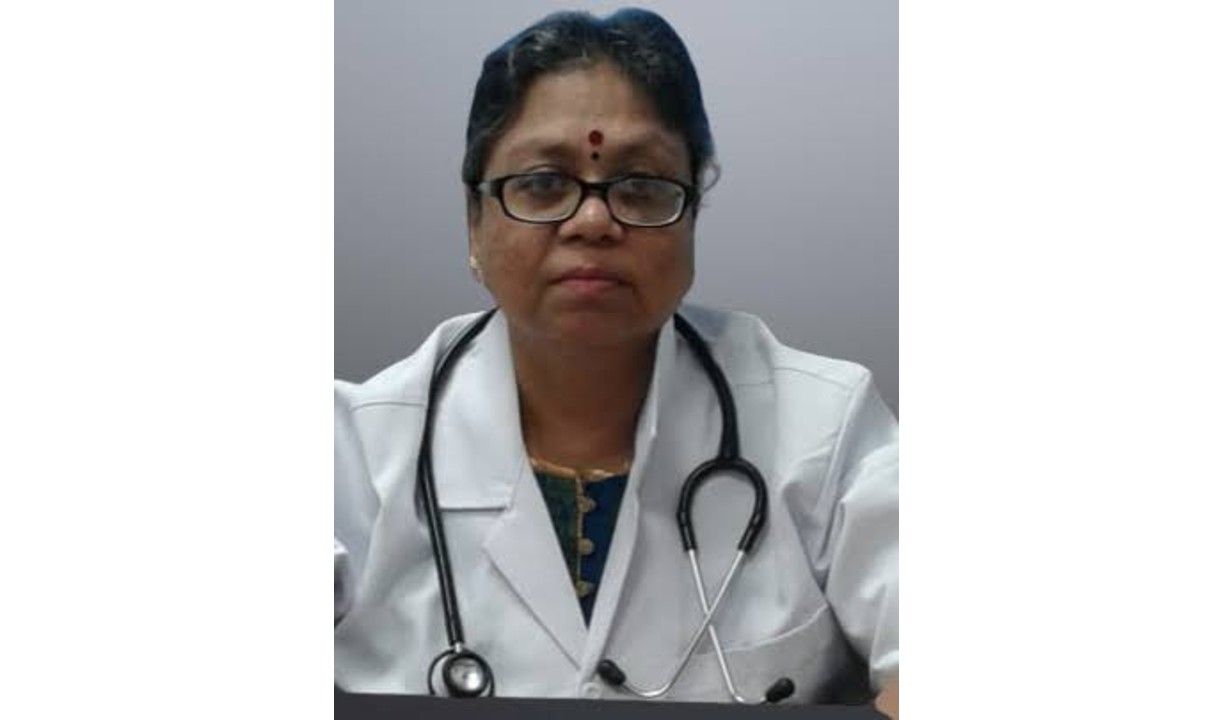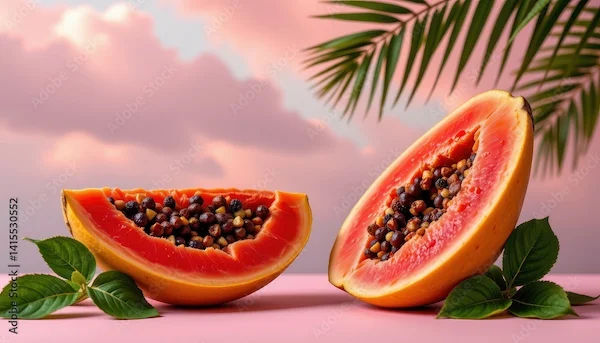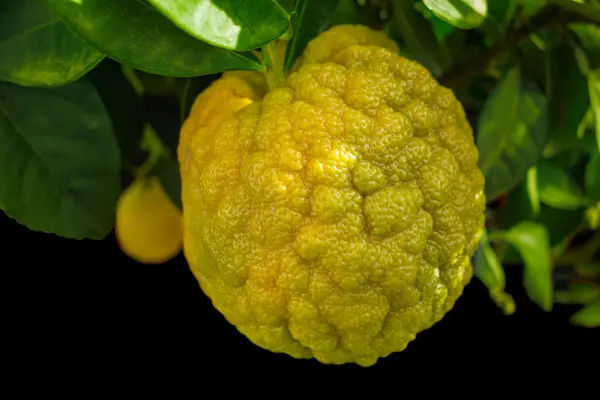Guide to Monsoon Maladies
Stay healthy during the monsoon season with our comprehensive guide on common illnesses, prevention strategies, and essential care tips. Learn how to protect yourself and your loved ones from monsoon maladies like dengue, malaria, and typhoid.

Written by Dr. Mohammed Kamran
Reviewed by Dr. Rohinipriyanka Pondugula MBBS
Last updated on 27th Oct, 2025

Introduction
The monsoon brings relief from scorching heat—and a surge in illnesses that thrive in rain and humidity. From mosquito-borne fevers like dengue and malaria to water-borne infections such as cholera and typhoid, monsoon maladies can derail your season if you’re not prepared. Add in colds, coughs, fungal skin infections, and the risks after urban flooding, and it’s easy to feel overwhelmed.
This practical guide helps you stay healthy, not anxious. You’ll learn why monsoon illnesses spike, how to spot early warning signs, and proven steps to prevent infection at home, at work, and on the move. We’ll cover mosquito-proofing that actually works, safe water and food habits, flood cleanup precautions, and when to treat at home versus when to see a doctor. We’ll also highlight special tips for children, seniors, pregnant individuals, and those with chronic conditions. Throughout, we’ll weave in quick checklists, evidence-backed insights, and recovery advice so you can enjoy the rains safely. Let’s make monsoon your favourite season again—without the maladies.
Consult a Top General Practitioner for Personalised Advice
Understanding Monsoon Maladies: Why Illness Spikes in the Rainy Season
Increased humidity and pooled water create ideal breeding grounds for disease vectors and microbes during the
monsoon.
Monsoon changes the environment in ways that favour germs and vectors. Pooled water in buckets, planters,
construction sites, and clogged drains creates ideal breeding sites for Aedes and Anopheles mosquitoes—vectors for
dengue and malaria. Even small collections of water (as little as a bottle cap) can hatch larvae in a week. Humidity
shortens mosquito life cycles and boosts virus replication in mosquitoes, increasing transmission potential.
Heavy rains often overwhelm urban drainage and sanitation systems. When sewage mixes with floodwater, pathogens
can contaminate hands, utensils, and food surfaces. Homes may store water intermittently during supply disruptions,
and if storage isn’t hygienic or covered, microbes proliferate and mosquitoes breed. This is why waterborne diseases
spike across many cities.
Indoors, high humidity encourages mould and dust mite growth, worsening allergies and asthma. Damp clothing and
closed footwear promote fungal skin infections. Crowding in public transport during downpours increases exposure to
respiratory viruses, adding to the burden of monsoon maladies.
Hidden risks also lurk after floods. Leptospira bacteria, shed in animal urine, can survive in wet soil and water; walking
through floodwater with small skin cuts raises infection risk. The good news: targeted prevention—source reduction of
stagnant water, safe water and food practices, and smart personal protection—lowers your overall risk dramatically.
The Most Common Monsoon Maladies and Their Warning Signs
Recognising the specific symptoms of mosquito-borne and waterborne diseases is key to early diagnosis and treatment.
Dengue and Malaria: High Fever, Vectors, and Red Flags
Dengue typically presents with sudden high fever, severe headache, retro-orbital pain, body aches, and sometimes a
rash. Warning signs include persistent vomiting, abdominal pain, bleeding gums, nosebleeds, and lethargy. Platelet
counts may fall, but platelets alone don’t define severity; watch for dehydration and bleeding. Malaria often features
fever with chills and sweats, headache, and fatigue; if you’ve had a “flu-like” illness after monsoon exposure, especially
with mosquito bites, consider testing.
Leptospirosis: Risks After Floods and Contact with Contaminated Water
Common in flood-affected areas, leptospirosis may start like a flu—fever, headache, muscle pain (often in calves), and
red eyes. Severe forms can cause jaundice, kidney issues, or bleeding. Exposure history matters: wading through
floodwater, cleaning waterlogged homes, or handling pets/rodents increases risk. Early antibiotics improve outcomes;
don’t dismiss post-flood fever as “just viral.”
Acute Diarrhoeal Diseases: Cholera and Typhoid Basics
Cholera causes profuse “rice-water” stools and rapid dehydration; prompt oral rehydration solution (ORS) saves lives.
Typhoid often presents with prolonged fever, abdominal pain, headache, and constipation or diarrhoea. Safe water,
hand hygiene, and food safety are critical. Typhoid vaccination can reduce risk; discuss options if you live in or travel to
high-incidence areas.
Viral Colds/Flu and Post-Viral Coughs in Humid Weather
Humidity and crowding favour respiratory infections. Symptoms include a runny nose, cough, sore throat, low-grade
fever, and fatigue. Most improve with rest, fluids, and symptomatic care within 5–7 days. Persistent or severe symptoms
warrant evaluation to rule out bacterial infection or influenza, especially for high-risk individuals.
Fungal Skin Infections and Conjunctivitis
Damp clothes and shoes promote tinea (ringworm), athlete’s foot, and intertrigo. Itchy, red, scaly patches in skin folds
or between toes are common. Keep skin dry, change out of wet clothes quickly, and use breathable footwear.
Conjunctivitis (“pink eye”) spreads easily; maintain hand hygiene, avoid sharing towels/cosmetics, and seek care if
pain or vision changes occur.
If symptoms persist beyond two weeks, or if you notice red flags like bleeding, severe dehydration, confusion, or
breathing difficulty, consult a doctor online with Apollo 24|7 for further evaluation.
Mosquito-Proof Your Home and Neighbourhood
Eliminating stagnant water sources is the most effective way to prevent mosquito breeding and reduce disease
transmission.
Source Reduction: 10-Minute Weekly Checklist
Your simplest, most effective dengue and malaria prevention is eliminating mosquito breeding. Each week:
- Empty, scrub, and cover water storage containers.
- Clear trays under flower pots; replace water in vases every 2–3 days.
- Remove or turn over buckets, lids, tyres, and containers outdoors.
- Unclog roof gutters and balcony drains.
- Refresh pet water bowls daily.
- Check fridge drip trays, AC trays, and water purifiers for standing water.
- Ensure overhead tank lids fit tightly; seal gaps with mesh.
This “mosquito breeding control checklist” takes minutes and pays off for weeks.
Personal Protection: Repellents, Clothing, and Nets
- Use EPA/WHO-recommended repellents (DEET, picaridin, IR3535, lemon eucalyptus oil) on exposed skin. Reapply as per label, especially after rain or sweat.
- Wear long sleeves, long trousers, and socks at dawn/dusk. Light-coloured clothing helps spot mosquitoes.
- Use window screens and door closers; sleep under insecticide-treated nets if airflow permits, especially for infants and
seniors. - Consider spatial repellents or electric vapourisers indoors; outdoors, use fans to disrupt mosquito flight.
For travellers and commuters, pack a small spray repellent and a foldable umbrella to minimise bites during downpours.
Community Actions with Your RWA/Housing Society
- Organise monthly cleanup drives targeting drains, rooftops, and parking areas.
- Request municipal fogging based on local vector surveillance; combine with source reduction for impact.
- Place covered sand in plant trays in common areas to absorb water.
- Share a “vector alert” board in lifts with weekly reminders and a QR code linking to the society’s prevention guide.
Community-level action scales your protection beyond the home.
Eat, Drink, and Breathe Safe: Water, Food, and Air Hygiene During Monsoon
Maintaining strict water and food hygiene, alongside controlling indoor humidity, significantly lowers infection risk.
Safe Drinking Water and ORS Use
Monsoon disrupts water quality. To prevent waterborne diseases in the rainy season, do the following:
- Boil water for 1 minute (rolling boil) or use certified filters (RO/UV) and store in covered, cleaned containers.
- Use separate ladles for drinking water; avoid touching the inside of storage vessels.
- When diarrhoea strikes, start ORS immediately: adults 200–250 ml after each loose stool; children as per weight.
- Avoid ice from unknown sources and raw produce washed in unsafe water.
Food Hygiene at Home and Outside
- Wash your hands with soap before food preparation and eating. Keep nails trimmed.
- Cook thoroughly; reheat leftovers to steaming hot. Refrigerate within 2 hours.
- Keep raw and cooked foods separate; sanitise cutting boards.
- Be cautious with street food during heavy rains; choose hot, fresh items prepared in front of you.
Ventilation, Indoor Humidity, and Mould Control
- Cross-ventilate rooms when the rain eases; use exhaust fans in the kitchen and bathrooms.
- Aim for indoor humidity below $\sim$50–55%. If possible, run a dehumidifier in persistently damp rooms.
- Sun-dry bedding and towels when you can; avoid drying clothes in closed rooms.
- Clean visible mould with detergent solution; discard mouldy cardboard and damp carpets. Wear gloves and a mask
during cleanup.
These steps reduce respiratory infections in monsoon humidity and curb fungal skin flare-ups.
When to Self-Care and When to Seek Medical Help
Most mild viral illnesses can be managed at home, but specific warning signs require urgent medical attention.
What’s Safe to Manage at Home and What Isn’t
Many mild viral fevers, colds, and straightforward gastroenteritis can be managed with rest, fluids (ORS for diarrhoea),
light meals, and fever control. Avoid unnecessary antibiotics; they don’t work for viruses and can mask typhoid or
worsen diarrhoea.
Red Flags by Condition and Timelines
Seek medical care urgently if you have:
- Fever with bleeding, severe abdominal pain, persistent vomiting, confusion, severe headache, or breathlessness.
- Signs of dehydration: lethargy, very dry mouth, little or no urine, dizziness.
- Fever persisting beyond 48–72 hours without improvement, especially after flood exposure or travel.
- Jaundice, dark urine, or calf tenderness after wading through floodwater.
- High-risk status: pregnancy, infants, seniors, diabetes, heart/lung disease.
If symptoms persist beyond two weeks, consult a doctor online with Apollo24|7 for further evaluation. If your condition
does not improve after trying these methods, book a physical visit to a doctor with Apollo 24|7.
Tests That Help: CBC, Dengue NS1/Platelets, Malaria Tests, Stool, Typhoid
- Dengue: NS1 antigen (days 1–5), IgM later; monitor CBC with platelets for trends.
- Malaria: rapid tests and peripheral smear.
- Diarrhoea: stool routine/culture if severe or prolonged; consider cholera in outbreaks.
- Typhoid: blood culture is the gold standard; Widal has limitations—follow your clinician’s advice.
Apollo 24|7 offers convenient home collection for common tests like CBC, dengue NS1, malaria parasite tests, and
basic stool examinations, which can speed up diagnosis and keep you out of waiting rooms.
Protection for Vulnerable Groups
Children, seniors, and those with chronic conditions need tailored prevention strategies and proactive health
monitoring.
Children and School Routines
- Pack a monsoon kit: light raincoat, sanitiser, small towel, spare mask if advised.
- Encourage handwashing after the loo and before tiffin; label personal bottles and avoid sharing.
- Use repellent on exposed skin and socks; ensure school windows have screens where possible.
- Keep kids home when febrile to reduce spread; seek care early for persistent high fever or lethargy.
Seniors, Pregnant Individuals, and Those with Chronic Illness
- Control comorbidities: monitor sugars (diabetes), blood pressure, and inhaler refills (asthma/COPD).
- Use repellents carefully and choose fragrance-free, lower-irritant options if sensitive.
- Hydration is crucial; track urine colour and frequency.
- Discuss prophylaxis and vaccines with your clinician. In some regions, typhoid vaccination and seasonal influenza
vaccination can be beneficial.
Vaccines to Discuss with Your Doctor (Typhoid, Influenza, Hepatitis A)
- Typhoid: Consider if you live in or travel to high-incidence settings or have exposure risks.
- Influenza: Annual vaccination is especially for seniors, pregnant individuals, and those with chronic illnesses.
- Hepatitis A: Consider in areas with inconsistent water safety or for children not previously vaccinated.
Speak with your clinician to tailor timing and product choice.
Recovering Right and Staying Resilient After Monsoon Illness
Prioritising rest, specific nutrition, and follow-up care ensures a complete and resilient recovery after illness.
Nutrition, Hydration, and Graded Activity
- After dengue/malaria: prioritise hydration, small, frequent meals rich in protein and vitamin C/iron foods to support recovery and blood counts.
- For diarrhoea recovery: continue regular diet; include bananas, rice, yoghurt, and vegetables; avoid ultra-spicy or deep-fried foods initially.
- Return to activity gradually; a “two good days” rule—only step up activity after two consecutive good-energy days.
Preventing Reinfection and Household Transmission
- Replace or wash toothbrushes, towels, and bed linen after recovery.
- Continue mosquito control and water safety—your immunity doesn’t protect against all strains or species.
- For conjunctivitis or skin infections, avoid sharing towels and apply prescribed treatments for the full course, even if you
feel better.
Post-Illness Labs and Follow-Ups
- Dengue: your doctor may monitor platelets and haematocrit for a few days after fever subsides.
- Malaria: follow up to ensure parasite clearance if advised.
- Typhoid: complete antibiotics as prescribed; avoid self-stopping. Consider blood culture if fever persists.
Apollo 24|7 offers home collection for CBC and other follow-up labs so you can rest while results come to you.
Unique Insights to Go Beyond Basics
- “10-minute weekly” habit building: Set a repeating calendar reminder for Sunday evenings to do source reduction.
Habits beat occasional cleanups. - Neighbourhood nudges: AQR (Always Question Residual) policy—after every rain, ask “Where did water sit this
week?” and fix one spot. Small wins compound. - Commute smart: Mosquitoes are less active in moving air; a compact, clip-on fan for desks or balconies can
meaningfully reduce bites. - Data matters: If your society logs mosquito hotspots, patterns appear in 2–3 weeks—then you fix the root cause.
Conclusion
Monsoon can be magical—verdant trees, cooler days, the smell of rain. It also reshapes our environment in ways that
favour mosquitoes, microbes, and mould. Understanding this helps you act early and smart. Focus on what moves the needle: a weekly, 10-minute mosquito check; safe water and food routines; well-ventilated, less-humid rooms; and timely decisions about self-care versus medical care. Recognise warning signs—like bleeding, severe abdominal pain, dehydration, jaundice, or confusion—and don’t delay seeking help.
If fever or diarrhoea lingers beyond a few days, or if you’re in a high-risk group, consult a doctor online with Apollo24|7 for guidance. For necessary tests like CBC, dengue NS1, or malaria screening, Apollo24|7 offers convenient home collection so you can recover while the lab comes to you.
For families, schools, and housing societies, small collective actions—clean drains, covered tanks, and clear communication—amplify protection for everyone. With prevention habits, quick triage, and community collaboration, “monsoon maladies” don’t have to be a yearly inevitability. Use this guide as your seasonal playbook, and enjoy the rains with confidence.
Consult a Top General Practitioner for Personalised Advice
Consult a Top General Practitioner for Personalised Advice

Dr. Rajib Ghose
General Physician/ Internal Medicine Specialist
25 Years • MBBS
East Midnapore
VIVEKANANDA SEBA SADAN, East Midnapore

Dr S Lakshmi Narasimha Reddy
General Practitioner
9 Years • MBBS
Kondapur
Singam's Kids Clinic, Kondapur

Dr. Moumita Roy
General Physician/ Internal Medicine Specialist
8 Years • MBBS , MD (Anesthesiology)
Kolkata
VDC Clinic, Kolkata

Dr. Bulbul Biswas
General Practitioner
35 Years • MBBS, Diploma in Maternity and child welfare
Kolkata
HERSTEL CARE CLINIC, Kolkata

Dr. Avinash Pasuparthy
General Practitioner
5 Years • MBBS
Visakhapatnam
Apollo Clinic Vizag, Visakhapatnam
Consult a Top General Practitioner for Personalised Advice

Dr. Rajib Ghose
General Physician/ Internal Medicine Specialist
25 Years • MBBS
East Midnapore
VIVEKANANDA SEBA SADAN, East Midnapore

Dr S Lakshmi Narasimha Reddy
General Practitioner
9 Years • MBBS
Kondapur
Singam's Kids Clinic, Kondapur

Dr. Moumita Roy
General Physician/ Internal Medicine Specialist
8 Years • MBBS , MD (Anesthesiology)
Kolkata
VDC Clinic, Kolkata

Dr. Bulbul Biswas
General Practitioner
35 Years • MBBS, Diploma in Maternity and child welfare
Kolkata
HERSTEL CARE CLINIC, Kolkata

Dr. Avinash Pasuparthy
General Practitioner
5 Years • MBBS
Visakhapatnam
Apollo Clinic Vizag, Visakhapatnam
More articles from General Medical Consultation
Frequently Asked Questions
1. What are the most common monsoon maladies?
Common rainy season illnesses include dengue, malaria, leptospirosis, acute diarrhoeal diseases (like cholera), typhoid, viral colds/flu, fungal skin infections, and conjunctivitis.
2. How can I tell dengue from a regular viral fever?
Dengue often has high fever with severe body aches, retro-orbital pain, and sometimes a rash. Warning signs include bleeding and severe abdominal pain. A dengue NS1 test in the first 5 days helps confirm.
3. What’s the best way to prevent waterborne diseases in the rainy season?
Boil or properly filter water, store it in covered containers, practice hand hygiene, and eat freshly cooked food. Start ORS early if diarrhoea begins.
4. Is it safe to wade through floodwater with gumboots?
Avoid floodwater whenever possible. Even with boots, splashes can reach skin or small cuts. If you had exposure and develop fever, muscle pain, or red eyes within 2 weeks, get checked for leptospirosis.
5. What should be in a monsoon home health kit?
Thermometer, ORS sachets, paracetamol, hand sanitiser, repellent, basic bandages, a torch, and your routine medications. Keep contact numbers for your doctor and emergency services.




